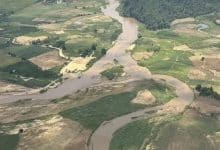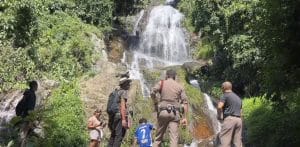Villages and academic collaboration gathers crucial data on Mekong River dam projects’ impact

In a collective stance against two prospective dam projects along the Mekong River, villagers from five communities, researchers, as well as a Thai university, have teamed up. The collaboration aims to gather comprehensive data regarding their local economy, natural resources, and potential downstream impacts. The participation from within the communities stretches to Ubon Ratchathani province, located in northeast Thailand. The data gathering has been ongoing since January.
Montri Chantawong, the founder of The Mekong Butterfly Freedom Group and a researcher, highlighted that this collaborative data gathering is an important step in preparing the villagers for the inevitable impacts of dam construction projects. Over the past nine months, 12 new dams have emerged upstream in China and an additional two in Laos. These structures have already had a profound effect on the natural environment and the villagers’ way of life.
Montri further explains that a study conducted about 10 years ago looked at the impacts of the Ban Kum dam project and found that the rising water level, at 115 metres above mean sea level, would result in flooding in communities stretching from Ban Kum to the Mekong River within Khemarat District. Around 20 households would be directly affected, reported KhaoSod.
Sorn Jampadok, a resident and fisherman from Ban Sa Merong, said…
“Some villagers who don’t own farmland make their living by fishing in the Mekong River, making fermented fish products, and exchanging these with their relatives every year. Various fish species, native flora, and riverine agriculture, especially in many villages where cotton growing along the riverbanks is the main source of income, would be affected.”
Simultaneously, another potential threat lurks nearby – 14 kilometres downstream from the town of Champasak in the Lao People’s Democratic Republic the prospective Phou Ngoy dam project. The impact assessment report detailing social and environmental impacts has already been completed and is ready to enter the prior consultation process, following the 1995 Mekong Agreement.
The University of Ubon Ratchathani, along with five village communities and The Mekong Butterfly, plan to present their findings to the public. The presentation, scheduled for September 13, this year, will invite local government agencies, students, and media to partake and spread awareness about the potential damages of the proposed dam construction projects.
Notably, the acquired data holds significant importance, showing the concerns about potential cross-border impacts from water storage, which might affect the Mun River region and more than ten Mekong River communities in Thailand. All of this data will be beneficial and necessary to reveal to the wider public, government-related ministries, new coming political parties and students, to broaden understanding about the impacts and for garnering more allies.
Latest Thailand News
Follow The Thaiger on Google News:


























